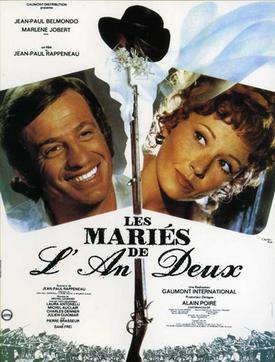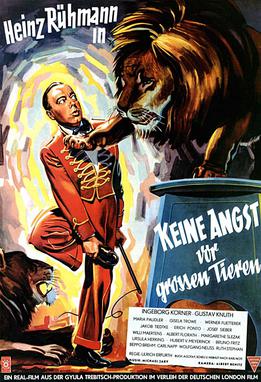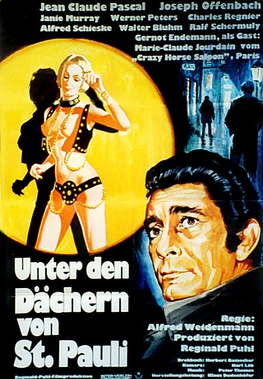Michel Drach was a French film director, writer, producer and actor.

Forbidden Games is a 1952 French war drama film directed by René Clément and based on François Boyer's novel Les Jeux Interdits.

We Are All Murderers is a 1952 French-Italian crime drama film written and directed by André Cayatte and starring Marcel Mouloudji, Raymond Pellegrin and Claude Laydu. It was shot at the Boulogne Studios in Paris. The film's sets were designed by the art director Jacques Colombier. It tells the story of René, a young man from the slums, trained by the French Resistance in World War II to kill Germans. He continues to kill long after the war has ended, as it is all he knows. It was entered into the 1952 Cannes Film Festival and won the Special Jury Prize.

Impossible Object, also known as Story of a Love Story, is a 1973 romantic drama film starring Alan Bates and Dominique Sanda. It was directed by John Frankenheimer with a screenplay by Nicholas Mosley based on his own novel. It was screened at the 1973 Cannes Film Festival, but was not entered into the main competition. Mosley wrote the screenplay at the behest of director Joseph Losey, whose film Accident was based on an earlier Mosley novel. Dirk Bogarde and Catherine Deneuve had been attached to the film. However, Losey had difficulty financing the film and later fell out with Mosley over The Assassination of Trotsky. Frankenheimer, looking to make an independent film, took over the project.

Passion is a 1982 film by Jean-Luc Godard, the second full-length film made during his return to relatively mainstream filmmaking in the 1980s.

No Place to Go is a German black-and-white film released in April 2000, directed by Oskar Roehler, starring Hannelore Elsner, about a suicidal middle-aged writer travelling around Germany at a time of personal crisis.

The 5th Cannes Film Festival was held from 23 April to 10 May 1952. As in the previous three festivals, the entire jury of this festival was made up of French persons, with Maurice Genevoix as the Jury President. The Grand Prix of the Festival went to the Two Cents Worth of Hope by Renato Castellani and Othello by Orson Welles. The festival opened with An American in Paris by Vincente Minnelli.

Ruth Leuwerik was a German film actress, one of the most popular stars of German film during the 1950s. She appeared in 34 films between 1950 and 1977. Leuwerik is probably best known for her portrayal of Maria von Trapp in the films The Trapp Family and The Trapp Family in America.

The Damned is a 1947 French war film and drama film directed by René Clément and starring Marcel Dalio, Henri Vidal, Florence Marly and Fosco Giachetti.. It was entered into the 1947 Cannes Film Festival. The film is notable for its depiction of the interior of a wartime submarine and for its tracking shots through the length of the U-boat. It was shot at the Victorine Studios in Nice and on location around Toulon and the Mediterranean coastline. The film's sets were designed by the art director Paul Betrand.

Erich Gustav Otto Engel was a German film and theatre director.

The Married Couple of the Year Two is a 1971 French comedy film directed by Jean-Paul Rappeneau. It was entered into the 1971 Cannes Film Festival. The title is a reference to “The Soldiers of Year II”, the conscripts raised by the Levée en masse in 1793 to defend the French First Republic against foreign invaders.

Gisela Trowe was a German actress and voice actress.

A Thousand Billion Dollars is a 1982 French thriller film directed by Henri Verneuil and starring Patrick Dewaere. It tells the story of a young French journalist who discovers how an American company is using assassinations and other criminal methods to take over French industries.

Rendezvous is a 1930 German musical film directed by Carl Boese and starring Lucie Englisch, Ralph Arthur Roberts and Alexa Engström. Separate versions were made in French and Spanish. Such multi-language versions were common in the early years of sound.

Under the Stars of Capri is a 1953 West German romantic comedy film directed by Otto Linnekogel and starring Hanna Rucker, Helmuth Schneider and Hans Leibelt. It was shot at the Göttingen Studios and on location at a variety of places including Capri, Ischia, Corsica and Hamburg. The film's sets were designed by the art directors Walter Haag and Hans Kutzner.
Hanna Rucker (1923–1982) was a German stage and film actress.

Not Afraid of Big Animals is a 1953 West German comedy film directed by Ulrich Erfurth and starring Heinz Rühmann, Ingeborg Körner and Gustav Knuth. It is a circus film and a remake of the French film Le Dompteur (1938). It was shot at the Wandsbek Studios of Real Film in Hamburg. The film's sets were designed by the art directors Albrecht Becker and Herbert Kirchhoff.

Behind Monastery Walls is a 1952 West German drama film directed by Harald Reinl and starring Olga Chekhova, Philip Dorn and Katharina Mayberg. It takes place in a priory and is sometimes known by the alternative title of The Unholy Intruders. It was shot at the Bavaria Studios in Munich. The film's sets were designed by the art directors Robert Herlth and Gottfried Will.

I'm Waiting for You is a 1952 West German drama film directed by Volker von Collande and starring Hanna Rucker, Joachim Brennecke and Anne-Marie Blanc. It was shot at Göttingen Studios and on location around Sylt in Schleswig-Holstein.

Under the Roofs of St. Pauli is a 1970 West German crime drama film directed by Alfred Weidenmann and starring Jean-Claude Pascal, Joseph Offenbach and Werner Peters.

















